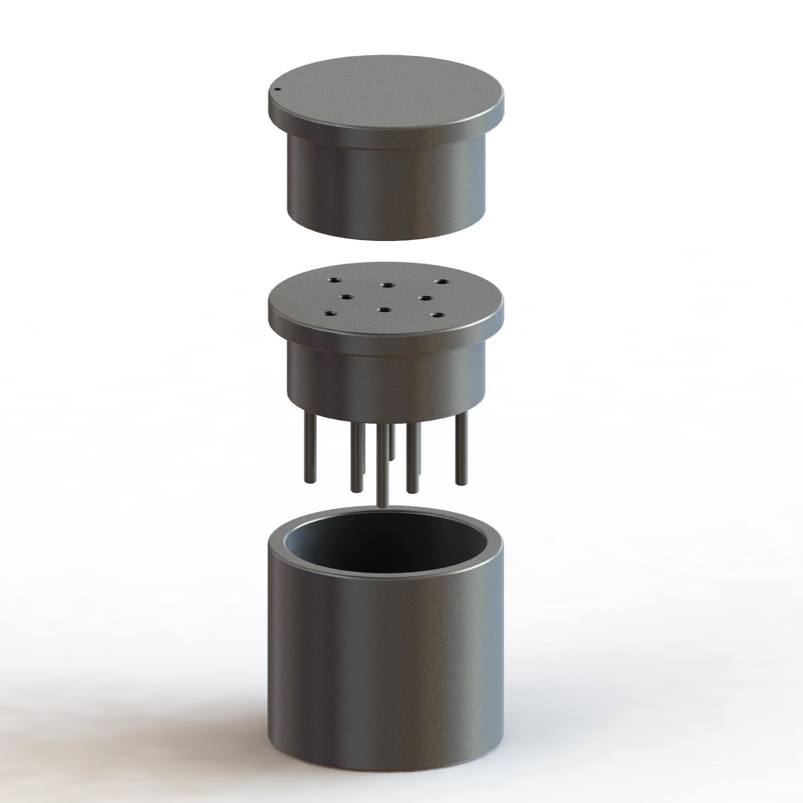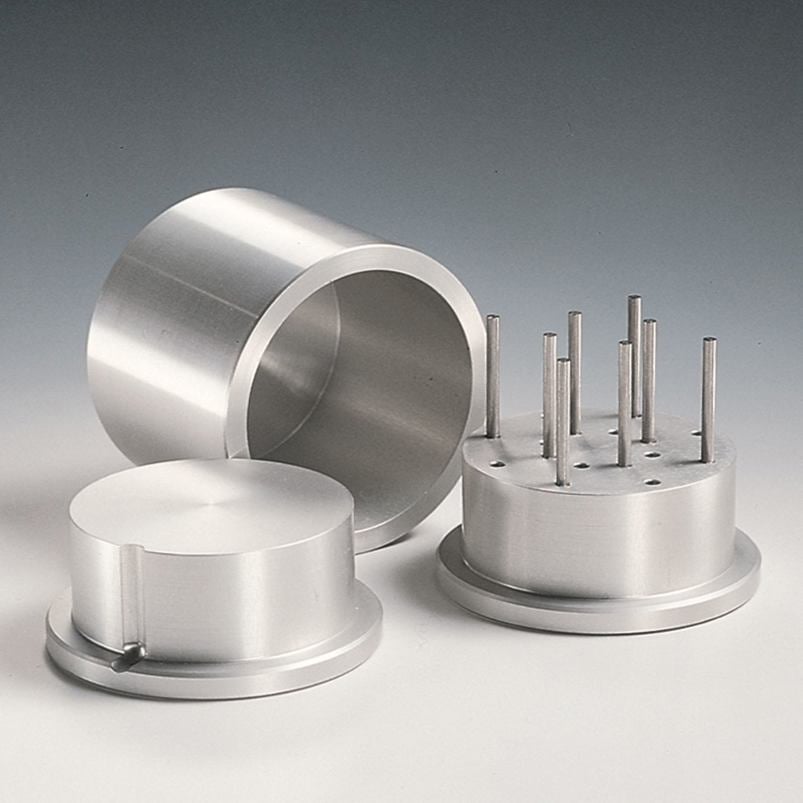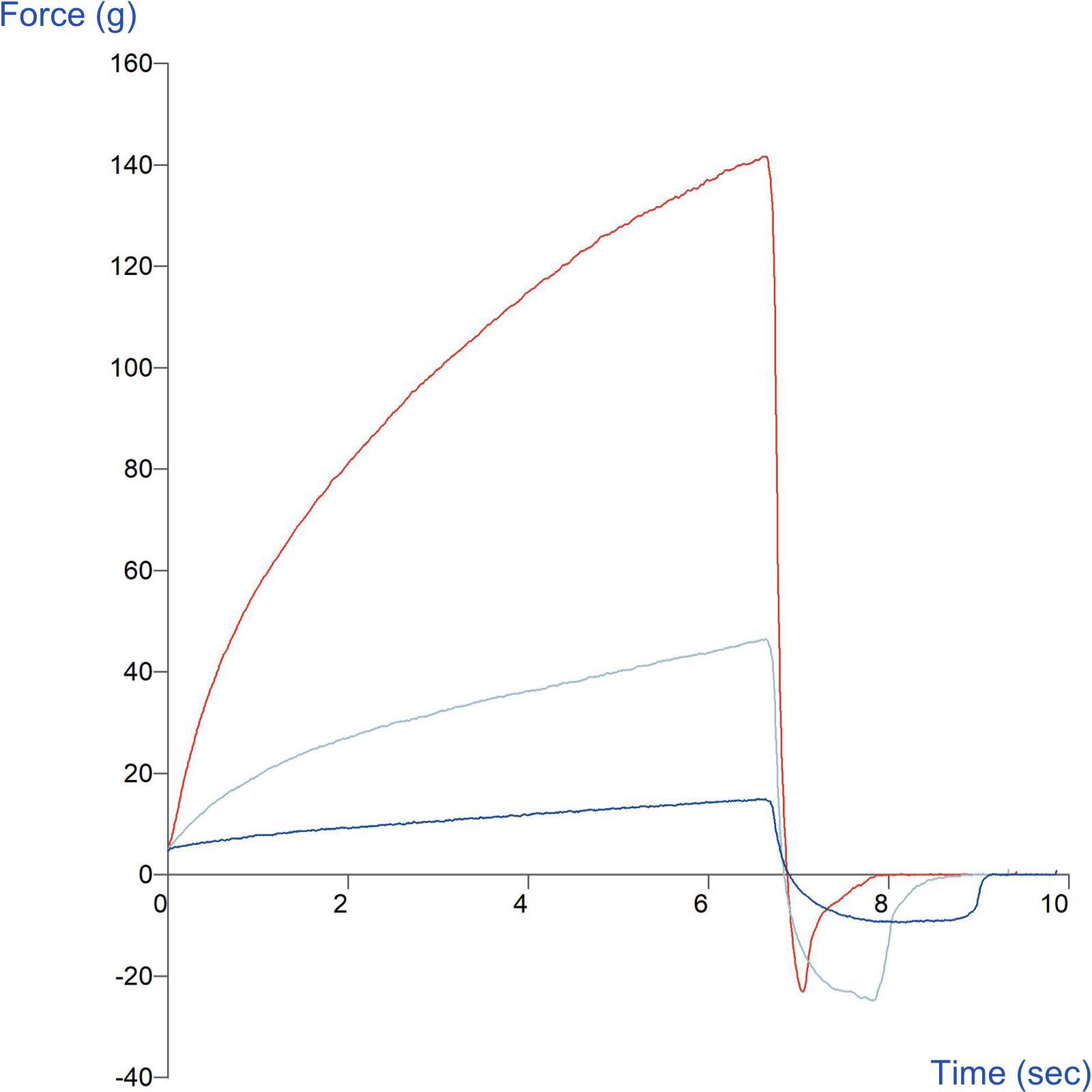Product overview
For most biscuits, a hard or crisp eating character is desired, and this is achieved only when the moisture content is low. The moisture contents of crackers and semi-sweet biscuits (like rich tea or Marie) are usually less than 2%, and for short dough types (like shortcake or digestive) it is less than 4%. The moisture content of biscuits is thus important to the eating character.
Beside processing parameters, the biscuit texture can be greatly affected by its recipe. The three prime ingredients of biscuits/crackers are flour, fat and sugar, all of which can have a marked effect on the finished biscuit quality. The biscuit dough firmness can be considerably altered by the change of any one of these ingredient quantities and can be used as a predictive tool of the baked goods.
This rig is used to measure the characteristics of biscuit dough. Dough consistency measurements can be used to predict the recipe water level to give a dough of optimum consistency, to monitor the toughening of dough with age and, under test conditions, to minimise variations in dough piece and biscuit weight. This dough test is suitable for crackers, semi-sweet biscuits, short-sweet biscuits and cookies.
The set comprises a test cell, spiked aeration plunger and a flattening plunger which is slightly deeper than the aeration plunger to give the sample a flat surface before penetration. A sample is placed in the cell, pockets of randomly distributed air are removed by the spiked plunger, and an even surface is achieved by application of the flattening plunger. A 6mm Cylinder Probe is used to measure the consistency/firmness of the dough. Normally an average measurement of firmness (taken from the maximum force value) is recorded from the performance of three penetration tests at different locations within the cell. Small variations in recipe level of fat, water and flour can be detected using this penetration method.
How does the Dough Preparation Set work?
Ideal sample form
Semisolid material that can be formed in a vessel.
Benefits and limitations
This test method is:
- Simple and quick
- Includes sample preparation method
- Measures firmness/consistency
Technical information
Installation
Full installation instructions are provided within the Education Zone of the latest Exponent/Connect software version and on the technical information sheet accompanying this product.
Chemical compatibility
Stable Micro Systems probes and attachments are commonly made from four materials: anodised aluminium (AA6082 T6), stainless steel (316 T), Delrin (acetyl copolymer) and Perspex (polycarbonate).
In general use, probes and attachments made from these materials will be suitable for testing food products and inert non-food materials.
The four materials listed above are not universally resistant to all types of chemicals and as such the compatibility of the probe/attachment material with the product (to be tested) must be established to prevent damage to the probes and attachments. If the compatibility of the product with the probe is unknown to the customer then the chemical information about the product (Material Safety Data Sheet or Product Data Sheet) should be submitted to Stable Micro Systems. Stable Micro Systems will then assess the suitability of the probe/attachment material for use with the product and advise accordingly. If this advice is not sought then Stable Micro Systems will not accept liability for probes/attachments damaged by chemical attack from the product being tested.
Cleaning and maintenance
All probes and attachments may be cleaned in warm (or hand hot) water using a mild detergent. A soft brush may be used but abrasive cleaning aids should be avoided. Stable Micro Systems products should not be microwaved or cleaned in a dishwasher.
Screw threads should be lightly lubricated after drying using a light lubricant, e.g. petroleum jelly, mineral oil. This will aid the fitting and unscrewing of the item. Each component of a probe or attachment should be wrapped separately when stored, to avoid scratching or chipping. This will safeguard against any unnecessary damage to the accessory.



